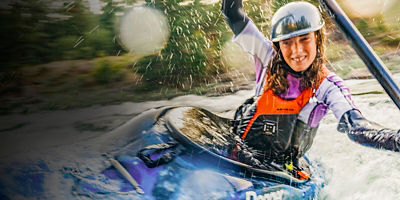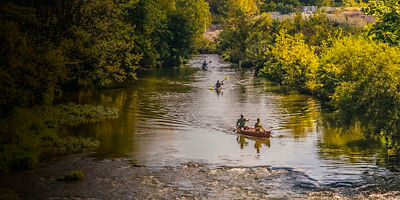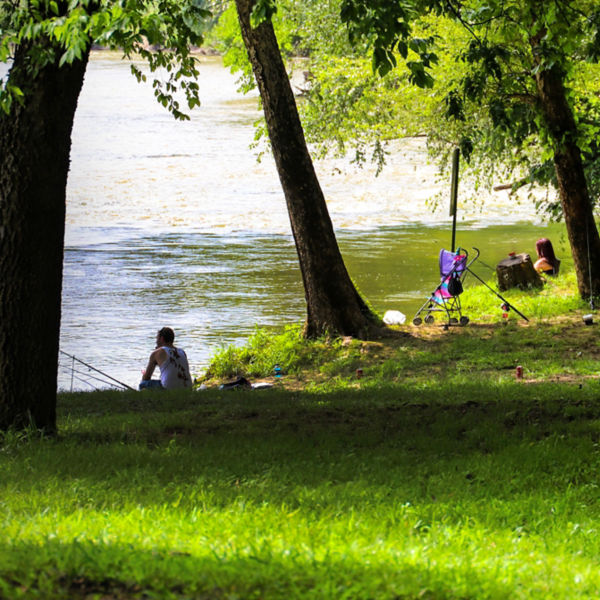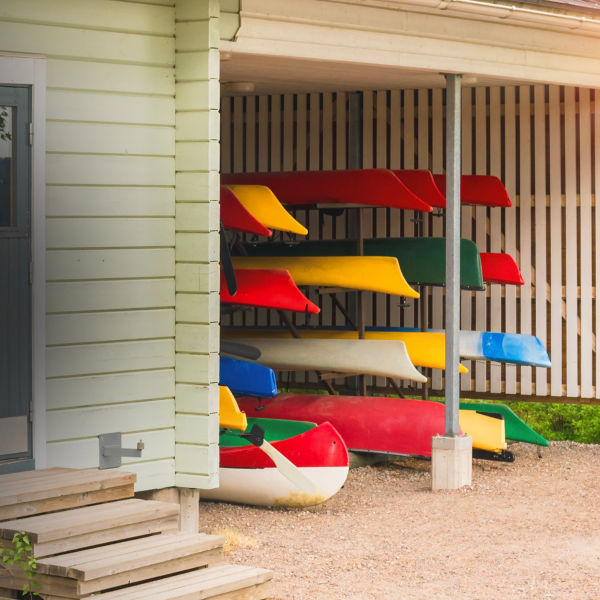
Enter the world of paddling and water whisks you away into a magical space separate from ordinary terrestrial life. It’s a pastime anyone can enjoy and that you can pursue forever with family and friends. And while it’s easy to get started kayaking, there are a few fundamentals to factor before pushing off from shore, foremost of which is the equipment needed. Don’t be intimidated, though. Be methodical and refer to the following essentials so that you can always launch prepared—paddling assured with everything needed for a fun, safe day on the water.
The Basics
Lifejacket: A personal floatation device (PFD) is the one mandatory gear item that you can never leave behind. Wear a properly fitting, U.S. Coast Guard-approved lifejacket every time you’re out on the water, and keep it fastened snugly at all times. Don’t go out on the water without one.
Boat: Whether it’s a kayak, canoe or standup paddleboard (SUP), make sure your chosen paddlecraft is in well-maintained working order and is appropriate for the paddling conditions ahead (factoring forecasted weather that you should check prior to your launch). Double check that you have enough seating for everyone in your party. If you’re paddling solo, a kayak cart might be helpful for transporting your craft to your launch.
Paddle: Don’t be up a creek without a proverbial paddle to get you where you’re going. And if you have multiple paddlecraft, make sure you have the correct ones for the appropriate craft. SUP paddles are longer than canoe paddles, and rec kayak and touring paddles are longer than whitewater paddles. Consider a spare for extended trips, as well.
Apparel
Clothing: Base your choices on the paddling conditions and the weather, factoring the temperature of the water, not the air, in the event you could end up in it. Keep rainwear and splashwear handy if you’re expecting a storm or waves. If it’s hotter, summer paddling: For bottoms, think about elastic-waist, synthetic, quick-dry shorts or stretchy pants; and for tops, use a quick-dry, wicking and/or sun-protective shirt. Additional apparel can include a windbreaker, paddling gloves, and swimsuit. As water temps drop, add insulation with fleece and neoprene wetsuit layers.
Water Shoes/Sandals: Unless you’re paddling in frigid water, the best footwear is some sort of water shoe, sandal or bootie made to get wet and made to stay fixed on your heel (hint: avoid flip-flops). There’s also a reason (slick, rocky shorelines) that paddlers look for a protected toe box.
Sun protection: Bring sunglasses to reduce on-water glare and eyestrain. And use some sort of retainer to keep them in place (some brands even offer retainers that float). Keep the sun off your face and neck with a sun hat offering a 360-degree brim. Tip: Use a drawstring so it doesn’t fly away in high wind. And apply sunscreen (15 SPF or higher) liberally to any skin exposed to the sun and keep it handy for subsequent applications.




















































































































